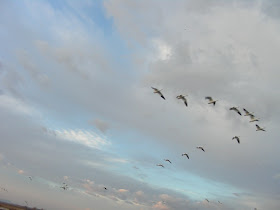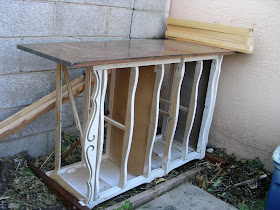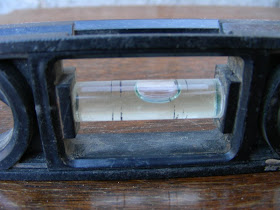We are darn lucky to have not one - but two - great national parks to explore. Carlsbad Caverns is known as "a cave park" while Guadalupe Mountains is known as "a hiking park". That's largely true (although there are great hikes and wonderful scenery at Carlsbad too!). Guadalupe Mountains National Park has some of the most striking scenery and
the best-built trails we've come across. This summer we'd done a bunch of great day hikes at Guadalupe and this past weekend we did a spectacular two day through-hike from Dog Canyon to McKittrick Canyon (map below from an NPS
brochure):

After a winding drive across the Lincoln National Forest we, at long last, crossed from New Mexico into Texas and arrived at the Dog Canyon ranger station. Here's Jennifer and Katie making last minute preparations at the trail head:

Off we go across some nice shortgrass prairie. (Can you guess the top two states for "most species of native grass? Texas and New Mexico, of course!).

Soon we had great views of Dog Canyon and fall colors courtesy of maple, ash, hackberry, hornbeam, cherry, honeysuckle and oaks:

After about 3 miles of up, up, up and chilly winds from the north, we reached McKittrick Ridge and were treated to spectacular views all the way to McKittrick Ridge Campground:

We met Robbie and Mike who had hiked in from the opposite direction to meet us at the campground. Here are Katie, Mike and Robbie feverishly setting up camp (the temps. were low and the winds high):

(Apologies for the lack of campground picks - it was just too darn cold. We woke up to frozen water!)
After saying farewell to Robbie and Mike, we headed back out on the trail.

View of McKittrick Canyon and the Permian Basin to the east:

Views into McKittrick Canyon Wilderness Study Area (closed to the public):

This is the stuff of life!

Heading back east and descending into McKittrick Canyon:

We don't know what this skinny ridge is called but we'll call it "razorback crossing":

Soon we were ready to remove some layers of cloths, have a snack and take in the views. Here's Jennifer and Katie absorbing wilderness medicine:

We would be descending into this gorge-like canyon:

The wonders of an extended southwestern mountain autumn delighted us at every turn for the remainder of the hike...










Good hiking comrades, 15 miles of rugged wilderness and the wonders of forest, desert and grasslands - who could ask for more?!!!


 ...many historic (and cute) buildings...
...many historic (and cute) buildings...


 Steve brushing up on the birds:
Steve brushing up on the birds: Next morning we awoke (tent camping) to temps in the low 30's but we were excited to make it back to the refuge early to take in the wonderful sunrise...
Next morning we awoke (tent camping) to temps in the low 30's but we were excited to make it back to the refuge early to take in the wonderful sunrise...
 Outgoing snow geese:
Outgoing snow geese:
 Sandhill Cranes, Ross's Geese, Snow Geese..
Sandhill Cranes, Ross's Geese, Snow Geese.. ...Gambel's quail...
...Gambel's quail... ...old farm road...
...old farm road...

























































